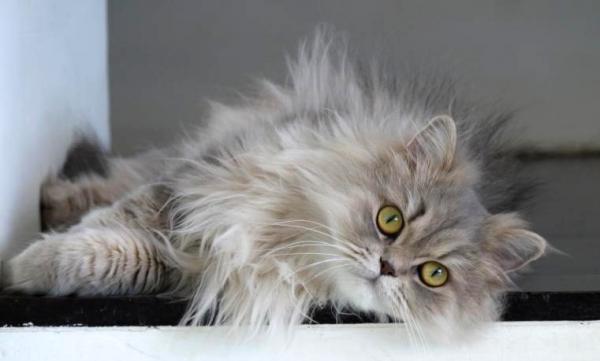We can easily recognize the Persian cat by its broad and flattened face together with the abundant fur. They were introduced in Italy from ancient Persia (Iran) around 1620 although the true origin is unknown. The current standard of Persian, as we know it, was set in 1800 in England and comes from the Turkish Angora.

Origin
- Africa
- Asia
- Europe
Physical appearance
We observe a rounded head that together with the prominent cheekbones and a short snout have just shaped the flattened face of this breed. The eyes are large, full of expressiveness in contrast to the small, rounded ears.
The Persian cat is medium / large in size, very muscular and rounded. It has a compact body, Corby style, and stands out for its thick legs. Its thick and abundant hair is long and very soft to the touch.
The colors of the Persian cat’s coat are very varied:
- White, black, blue, chocolate, lilac, red or cream are some of the colors in the case of solid fur, although there are also bicolor cats, Tabby and even tricolor in the case of females.
The Himalayan Persian meets all the characteristics of the common Persian although its coat is similar to that of the Siamese, the pointed. These always have blue eyes and can be shown in chocolate, lilac, cream, flame, tortoiseshell or blue.
Character
The Persian cat is a calm and familiar cat that we will find many times relaxing on the sofa, as it spends long hours of the day resting. It is an extremely domestic cat that does not show typical attitudes of its wild relatives. We will also observe that the Persian cat is very presumptuous and ostentatious, knows that it is a beautiful animal and will not hesitate to strut several times in front of us to get caresses and attention.
He likes to feel accompanied by people, dogs and other animals. He also behaves wonderfully with children if they do not pull his hair and behave with him appropriately. It should be added that it is a very sweet cat that we will easily convince to do tricks of all kinds if we reward it with treats.
Health
The Persian cat is prone to suffering from polycystic kidney disease or the symptom of retained testicles. Like any cat, we will also be careful to brush it to avoid the dreaded hairballs that end up in the stomach.
Other diseases that can affect your Persian cat are:
- Toxoplasmosis
- Abortions in the case of blue cats
- Malformations in the case of blue cats
- Malocclusion
- Chediak-Higashi syndrome
- Congenital hookworm
- Entopion
- Congenital epiphora
- Primary glaucoma
- Skin fold dermatitis
- Stones in the urinary tract
- Patella luxation
- Hip dysplasia
Care
The Persian cat sheds its hair according to the season, for that reason and to maintain the quality of the coat it is very important to brush them daily (we will also avoid tangles and hairballs in the stomach). Offering your cat a bath if it has become excessively dirty is a good option to prevent dirt and tangles. In the market we will find specific products for the breed that serve to eliminate excess fat, cleaning the tear ducts or ears.
Curiosities
- Obesity is a very serious problem in the Persian breed that sometimes manifests itself after sterilization. We recommend going to the vet and consulting the appropriate type of food.
